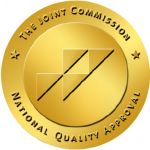Sometimes, some alcoholics drink every day. Not the answer you were expecting? You're not alone.…
For the alcoholic who has put down the drink, you know that alcoholism is a progressive disease. First, the physical condition of alcoholism must be addressed with medical detox and treatment. Second, recovery from alcohol use disorder (the clinical term for alcoholism) requires sustained awareness and maintenance of alcohol cravings. Learning to manage and control your cravings is the lynchpin of continuous sobriety and recovery.
What Are Cravings?
Cravings refer to the powerful urges to consume alcohol. Medical experts and researchers have identified several different types of cravings. However, most urges to drink fall into two categories: environmental and physiological.
The environmental explanation for cravings argues that past experiences and emotions, which have strong ties to alcohol use, triggers cravings. For example, if someone who was addicted to alcohol drives past a bar that they used to frequent, he may experience a strong desire to drink, seemingly for no reason. On the other side, if someone drinks often to suppress negative emotions; a break-up, or even just a bad mood, would act as a trigger.
Many contend that alcoholic cravings are physiological. Researchers explain that cravings involve neuroadaptations. Neuroadaptations are alterations in brain cell functioning caused by chronic alcohol consumption. While many things alter the functionality of brain cells, whether it’s food or sports or social interactions, the neuroadaptations produced by alcohol consumption significantly changes and enhances the reward memories attributed to alcohol. These enhanced alcoholic memories trigger what is commonly referred to as “cravings”.
More recent research is making significant strides in identifying which protein in the brain is partially responsible for the physical aspect of alcoholic craving. In essence, if an alcoholic cannot explain why they feel compelled to drink even after being sober for months or years, this may be explained by the changes in his brain.
When it comes to alcohol cravings, no model is complete. The obsession to drink, which can help explain why the relapse rate is so high for people recovering from alcohol addiction, is a combination of both biological and social conditions.
Is Medication the Answer?
As alcohol continues to devastate our communities and families, medical professionals continue to search for new answers and treatments for AUD. According to the NIAAA (National Institute on Alcohol Abuse and Alcoholism), more than 88,000 people die every year from alcohol-related causes, and more than 1 out of every 10 children live with a parent who suffers from alcoholism.
A recent study published in The Journal of Substance Abuse Treatment evaluated the possible benefits of extended-release naltrexone, marketed and sold as Vivitrol. The researchers from UCLA found that the use of extended-release naltrexone combined with medical supervision and a myriad of therapy modalities contributed to a reduction in self-reported alcohol cravings. However, the researchers note that the study only extended to 60 days of treatment, didn’t account for motivation or extent of AUD, and did not measure a control group in AUD treatment without the medication.
It is important to consider all medical options with regards to treating alcoholism and cravings. However, with each medication that is available, most of the research makes it clear that no pill is a solution unto itself.
Practice Mindfulness
Biological and physical explanations for alcohol cravings are just a part of the whole. Recovered alcoholics, experts in alcoholism, and researchers agree that developing coping strategies to overcome alcoholic desires are one of the most critical keys to remaining sober.
Mindfulness is a way of looking at your internal and external world without judgment. Being mindful allows someone to acknowledge a thought or craving without reacting instantly or beating oneself up because they had a negative thought. Recent studies confirm that developing a mindfulness strategy is helpful for coping with alcohol cravings.
An essential tool for sustained recovery from alcohol requires the ex-alcoholic to treat the underlying conditions that lead to relapse and addiction. Once sober, no one can get “more” sober. The key to overcoming AUD is by developing new behaviors and strategies to meet life as it is without the need to reach for a bottle of booze. Deep-breathing techniques (slow, deliberate full breathes for 30 seconds is a great start!), positive affirmations (my life is great when I stay sober), and choosing healthy activities such as hiking, yoga, or sports are things you can start practicing today to get through your next craving.
Overcoming the powerful cravings associated with alcohol dependency is a challenging journey, but it is one that no one has to face alone. Understanding why these cravings occur is the first step toward regaining control and reclaiming a life free from alcohol’s hold. At Boardwalk Recovery Center, we offer compassionate and personalized alcohol abuse treatment programs designed to address the root causes of alcohol abuse and support sustainable recovery. If you or a loved one is struggling, don’t wait—contact us today to begin your journey to a healthier, alcohol-free life.
Life can be good again and we’d like to show you how.









